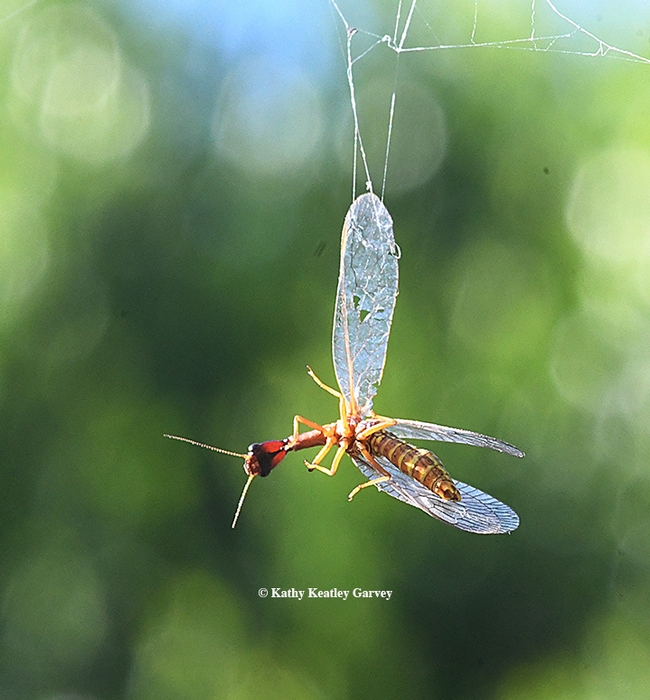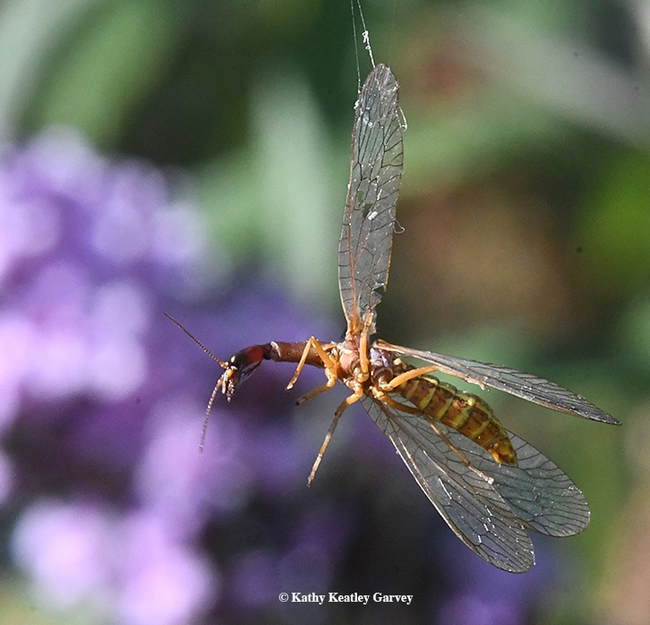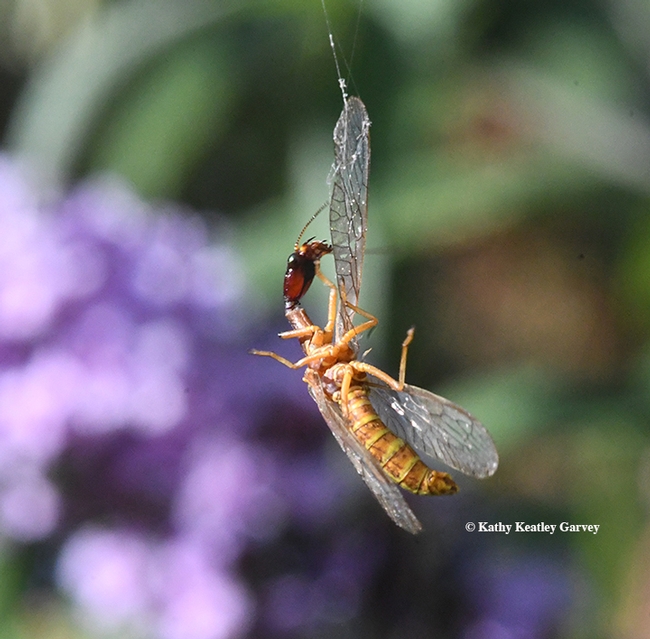- Author: Kathy Keatley Garvey
Have you ever seen a snakefly?
Not a snake. Not a fly. A snakefly!
They're predators but rarely seen. They eat insects such as aphids and mites. They have a long neck, or technically, an elongated prothorax, their most distinguishing characteristic.
We've seen them sprawled out--quite dead--on our porch lights. And we recently saw one spinning in a spider web in our pollinator garden in Vacaville, Calif. Imagine, a predator caught by a predator, in this case an orbweaver.
Senior insect biosystematist Shaun Winterton of the California Department of Food and Agriculture identified this little critter as belonging to the genus Agulla.
Snakeflies are fascinating insects. They're in the order Raphidiptera, which is comprised of two families, Raphidiidae and Inocellidae and "consisting of roughly 260 species," according to Wikipedia. "Members of this order have been considered living fossils, as the phenotype of a species from the early Jurassic period (140 million years ago) closely resembles modern-day species."
They certainly do look prehistoric. The order's name? Its derived from the Greek "raphio," meaning needle, and "ptera," meaning "wing."
Washington State University Extension entomologist Arthur Antonelli says in a WSU paper: "Snakeflies occasionally inhabit various area of houses by accident, but mostly live outside on trees. Though seldom seen, these insects are common in wooded areas, usually in association with bark."
Not this time. It bumbled into a spider web stretched between two butterfly bush branches.





